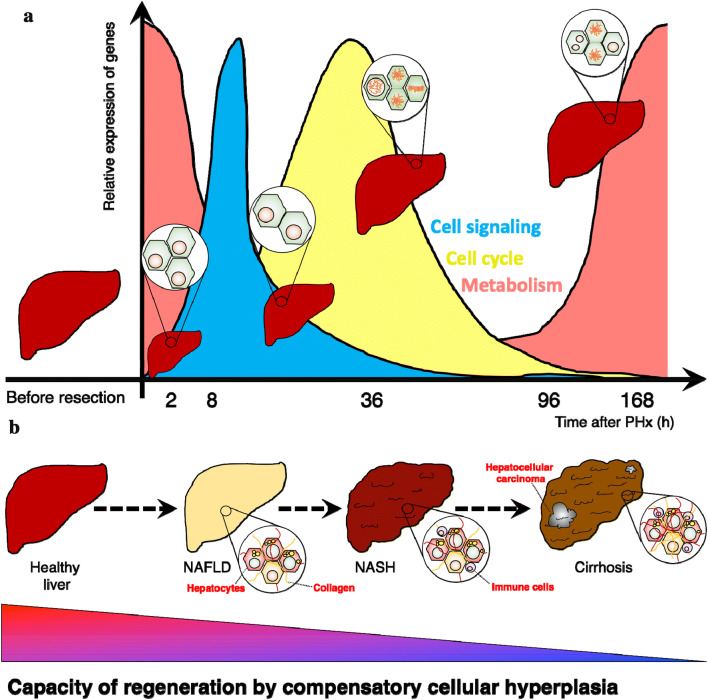Fig. 1.
Principles of liver disease, injury, and regeneration. Currently, liver resection and transplantation are the first line therapy offered to patients with a range of liver diseases. a Diseased livers display impaired capacity of regeneration after resection. Liver regeneration is a mechanism by which hepatic cells compensate for the loss of liver mass. It is well synchronized, and in a relatively short period of time, the liver returns to its normal size by proliferation of hepatic cells. b One of the most common diseases in the clinical setting displays a significant increase in accumulation of lipids in the parenchyma of hepatocytes and is known as non-alcoholic fatty liver disease (NAFLD). NAFLD leads to chronic damage of the hepatic parenchyma, promoting cycles of parenchyma damage and regeneration, leading to fibrosis and activation of immune cells recruited to clear debris. When cycles of damage/regeneration continue in the long-term, there will be more fibrosis and increased inflammation leading to non-alcoholic steatohepatitis (NASH). NASH may evolve to liver cirrhosis, cancer, and end-stage liver disease. During the development of NAFLD and progression to NASH, the capacity of regeneration of the liver by compensatory cellular hyperplasia is dramatically reduced as shown in the colored triangle in which red implies high and blue low capacity of regeneration

